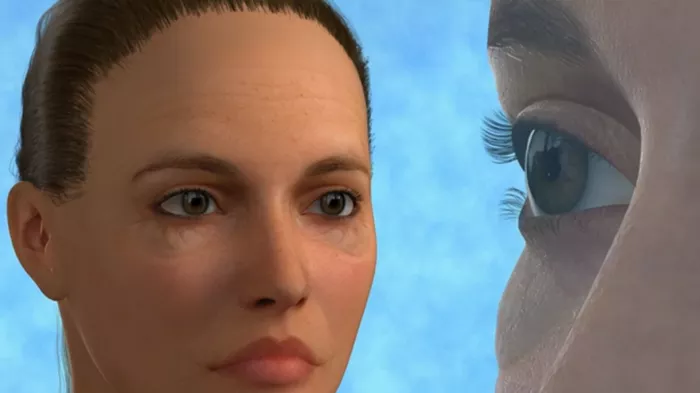Eye bags can be a frustrating and unsightly cosmetic concern for many people. While there are various treatments available to address this issue, one popular option is the use of fillers. In this article, we will explore how to get rid of eye bags with fillers, including the procedure, recovery process, and potential risks.
What are Fillers?
Fillers are injectable substances that are used to add volume to the skin and reduce the appearance of wrinkles and fine lines. They are typically made of hyaluronic acid, a substance that is naturally found in the body and helps to hydrate and plump the skin.
Fillers are commonly used in cosmetic procedures to address a variety of concerns, including wrinkles, fine lines, and loss of volume in the face. They can also be used to address the appearance of eye bags.
How to Get Rid of Eye Bags with Fillers
The procedure for getting rid of eye bags with fillers typically involves the following steps:
Consultation: The first step in the process is a consultation with a qualified provider. During this consultation, the provider will evaluate the patient’s eye bags and discuss the desired outcome of the procedure.
Anesthesia: The procedure is typically performed using a local anesthetic to numb the area around the eyes.
Injection: The provider will inject the filler into the area under the eyes to add volume and reduce the appearance of eye bags.
Massage: Once the filler has been injected, the provider may massage the area to ensure that the filler is evenly distributed.
Recovery: After the procedure is complete, the patient will be monitored in a recovery room before being discharged. Patients may experience some swelling and bruising after the procedure, but this should subside within a few days.
Recovery from Eye Bag Filler Treatment
Recovery from eye bag filler treatment is typically minimal. Patients may experience some swelling and bruising around the injection site, but this should subside within a few days. Patients can typically return to their normal activities immediately after the procedure.
It is important for patients to avoid rubbing or massaging the treated area for at least 24 hours after the procedure. Patients should also avoid strenuous activity and exposure to heat or sunlight for the first few days after the procedure.
Potential Risks and Complications
While fillers are generally safe and well-tolerated, there are some potential risks and complications associated with the procedure. These can include:
Allergic reactions: Some patients may experience an allergic reaction to the filler, which can cause swelling, redness, and itching.
Infection: There is a risk of infection at the injection site, which can cause swelling, redness, and pain.
Uneven results: While fillers can be effective in reducing the appearance of eye bags, there is a risk of uneven results or lumps and bumps.
Nerve damage: There is a risk of nerve damage around the injection site, which can cause numbness or weakness.
Migration: In some cases, the filler may migrate to other areas of the face, which can cause uneven results or lumps and bumps.
Conclusion
Getting rid of eye bags with fillers is a popular and effective cosmetic procedure that can help to reduce the appearance of under-eye bags and dark circles. The procedure involves injecting fillers into the area under the eyes to add volume and reduce the appearance of eye bags.
Recovery from the procedure is typically minimal, with patients experiencing some swelling and bruising around the injection site. However, there are some potential risks and complications associated with the procedure, including allergic reactions, infection, uneven results, nerve damage, and migration.
Patients should always consult with a qualified provider before undergoing any cosmetic procedure, including eye bag filler treatment. A qualified provider can evaluate the patient’s concerns, discuss the desired outcome of the procedure, and recommend the most appropriate treatment options.
FAQs
1. Can fillers remove under eye bags?
Under eye fillers, also known as tear trough fillers, can help improve the appearance of under eye bags by filling in hollows or depressions beneath the eyes. While fillers can provide temporary volume and smoothness to the under eye area, they do not directly address the underlying cause of under eye bags, such as excess fat or skin laxity.
2. How long does filler for eye bags last?
The duration of results from under eye fillers can vary depending on factors such as the type of filler used, individual metabolism, and lifestyle factors. On average, under eye fillers can last anywhere from six months to two years before additional touch-up treatments may be needed to maintain optimal results.
3. Is Botox or filler better for under eye bags?
Botox and fillers are two different types of injectable treatments that address different concerns around the eyes. Botox is typically used to relax muscles and reduce the appearance of wrinkles, while fillers add volume and fill in hollow areas. In most cases, fillers are more effective for addressing under eye bags, as they can provide immediate volume and smoothness to the under eye area.
4. Is it worth getting under eye filler?
The decision to undergo under eye filler treatment is subjective and depends on individual goals, concerns, and preferences. For some individuals, under eye fillers can provide a temporary but effective solution for reducing the appearance of under eye bags and dark circles, leading to a more refreshed and youthful appearance. However, it’s essential to consult with a qualified and experienced cosmetic injector to discuss the potential risks, benefits, and alternatives before proceeding with under eye filler treatment.


